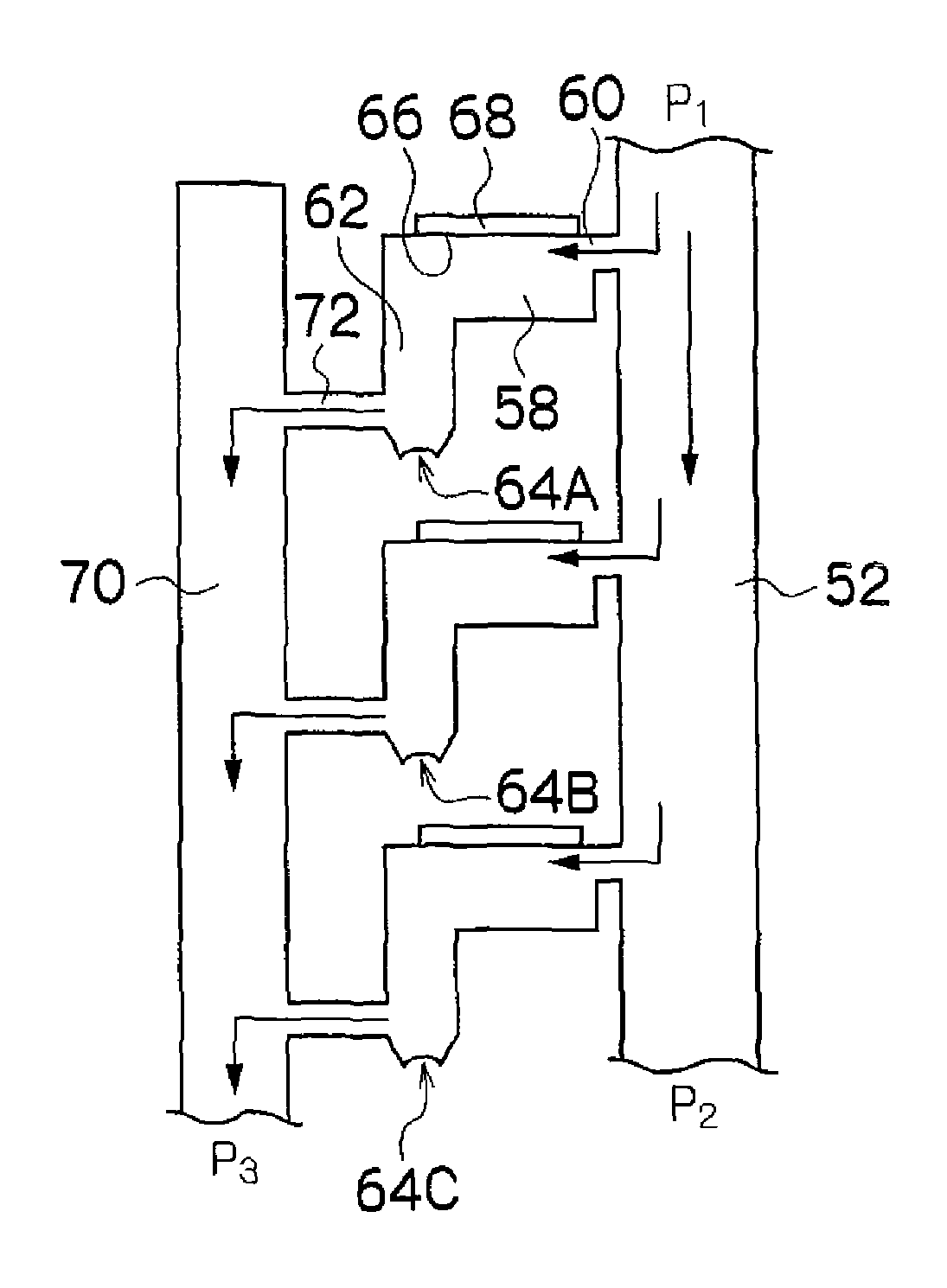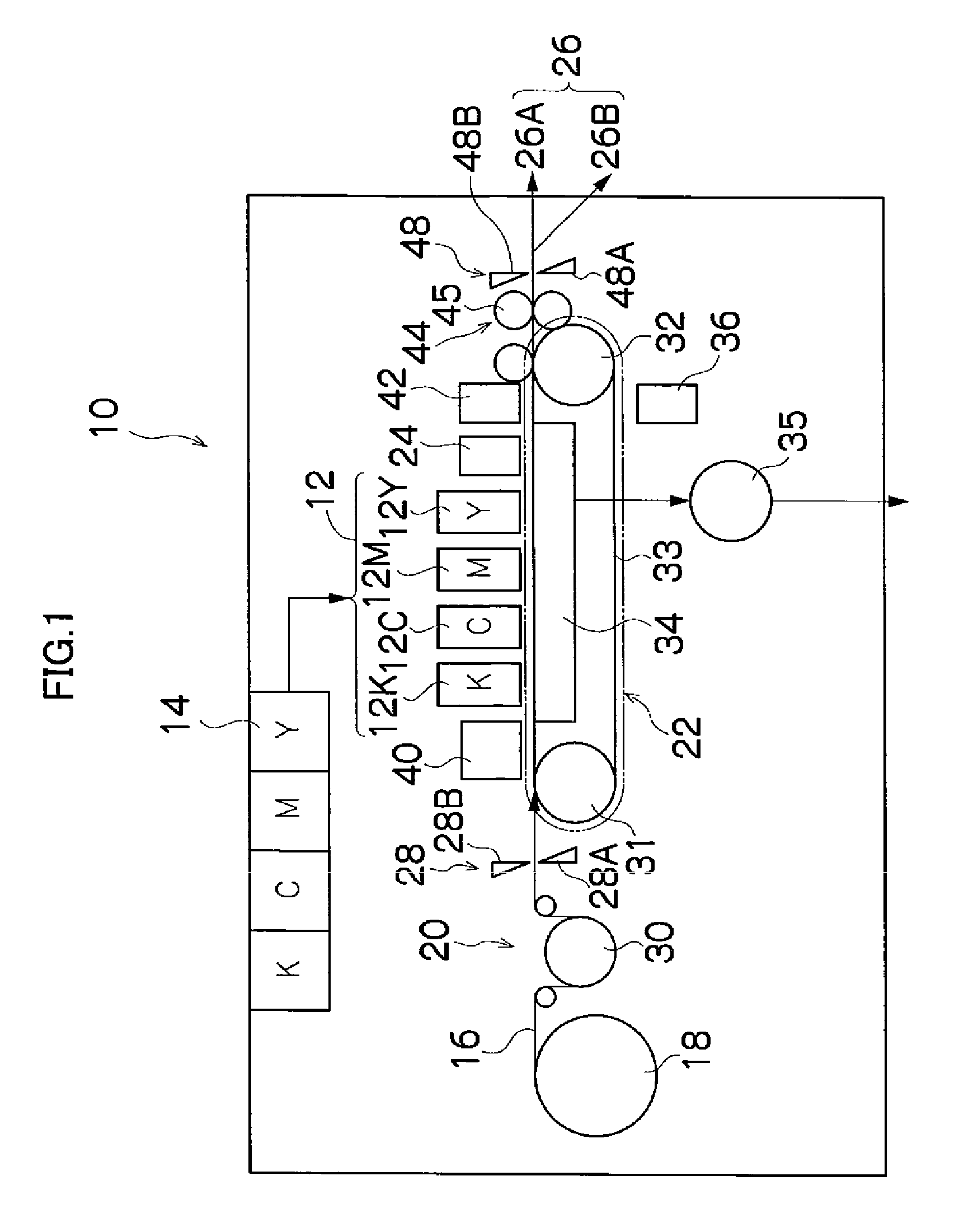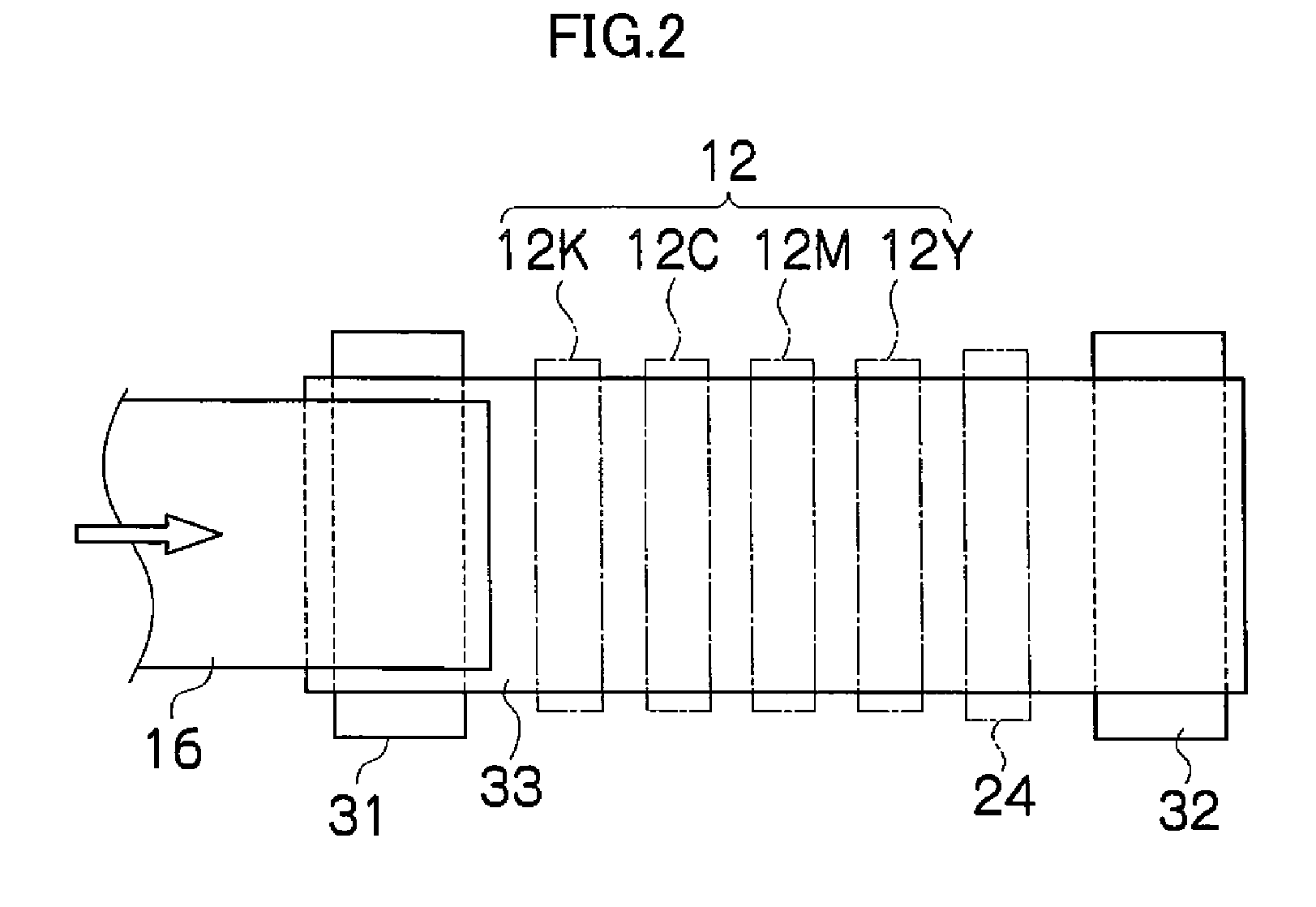Liquid circulation apparatus, image forming apparatus and liquid circulation method
a liquid circulation and image forming technology, applied in printing, inking apparatus, other printing apparatus, etc., can solve the problems of displacement of the dot position on the print medium, failure of ejection, and increase of the fluid resistance inside the nozzle, so as to prevent ejection defects, increase the liquid circulation volume, and increase the viscosity
- Summary
- Abstract
- Description
- Claims
- Application Information
AI Technical Summary
Benefits of technology
Problems solved by technology
Method used
Image
Examples
first embodiment
General Composition of Inkjet Recording Apparatus
[0072]Firstly, an inkjet recording apparatus which forms an image forming apparatus according to an embodiment of the present invention will be described. FIG. 1 is a general schematic drawing showing a general view of an inkjet recording apparatus according to an embodiment of the present invention. As shown in FIG. 1, the inkjet recording apparatus 10 comprises: a print unit 12 having a plurality of recording heads 12K, 12C, 12M, and 12Y for ink colors of black (K), cyan (C), magenta (M), and yellow (Y), respectively; an ink storing and loading unit 14 for storing inks of K, C, M and Y to be supplied to the recording heads 12K, 12C, 12M, and 12Y; a paper supply unit 18 for supplying recording paper 16; a decurling unit 20 for removing curl in the recording paper 16; a suction belt conveyance unit 22 disposed facing ink-droplet ejection face (the nozzle face) of the print unit 12, for conveying the recording paper 16 while keeping th...
second embodiment
[0197]Next, a second embodiment of the present invention will be described. Below, portions which are common with the first embodiment are not explained further, and the following description centers particularly on characteristic features of the second embodiment.
[0198]FIG. 12 is an oblique diagram showing a three-dimensional view of the periphery of a pressure chamber in a recording head according to the second embodiment. FIG. 13 is a plan diagram showing the detailed composition of the recording head according to the second embodiment. FIG. 14 is a cross-sectional diagram showing one portion of a second recording head (a cross-sectional view along line 14-14 in FIG. 13). In FIGS. 12 to 14, parts which are the same as those in FIGS. 5 to 7 are labeled with the same reference numerals.
[0199]The second embodiment is the same as the first embodiment except that the second embodiment is different from the first embodiment in respect of the connection arrangement of the individual cir...
third embodiment
[0201]Next, a third embodiment of the present invention will be described. Below, portions which are common with the first and second embodiments described above are not explained further, and the following description centers on characteristic features of the third embodiment.
[0202]FIG. 15 is a plan diagram showing the detailed composition of the recording head according to the third embodiment. FIG. 16 is a cross-sectional diagram showing one portion of the recording head according to the third embodiment (a cross-sectional view along line 15-15 in FIG. 16). As shown in FIGS. 15 and 16, in the recording head 50C according to the present embodiment, the pressure chambers 58A and 58B which are mutually opposing are joined together by means of an individual circulation channel 72, and a pressure differential (back pressure differential) is applied between the pressure chambers 58A and 58B, thereby causing ink to circulate from the pressure chamber 58A on the high pressure side, throu...
PUM
 Login to View More
Login to View More Abstract
Description
Claims
Application Information
 Login to View More
Login to View More - R&D
- Intellectual Property
- Life Sciences
- Materials
- Tech Scout
- Unparalleled Data Quality
- Higher Quality Content
- 60% Fewer Hallucinations
Browse by: Latest US Patents, China's latest patents, Technical Efficacy Thesaurus, Application Domain, Technology Topic, Popular Technical Reports.
© 2025 PatSnap. All rights reserved.Legal|Privacy policy|Modern Slavery Act Transparency Statement|Sitemap|About US| Contact US: help@patsnap.com



